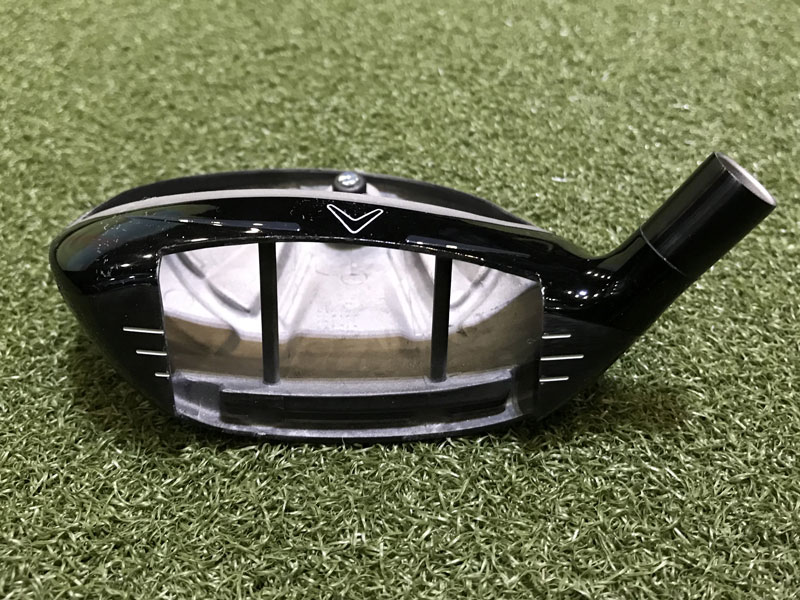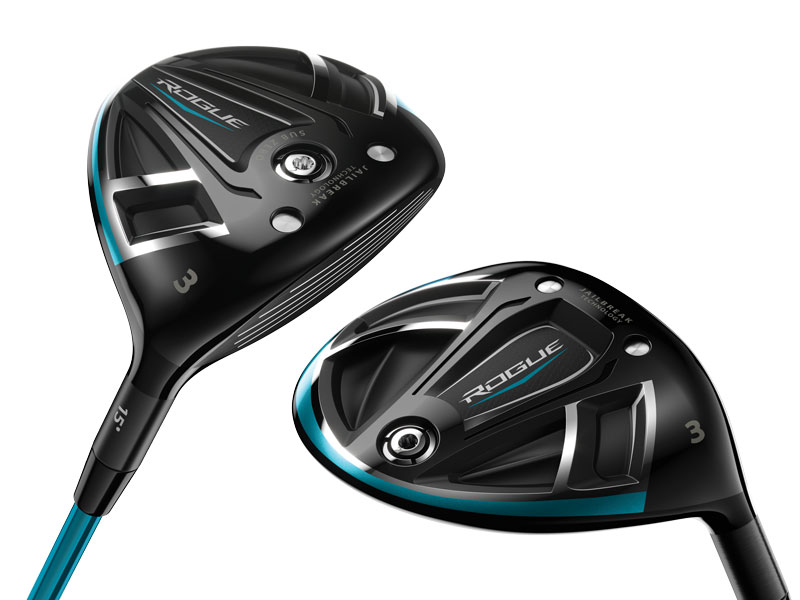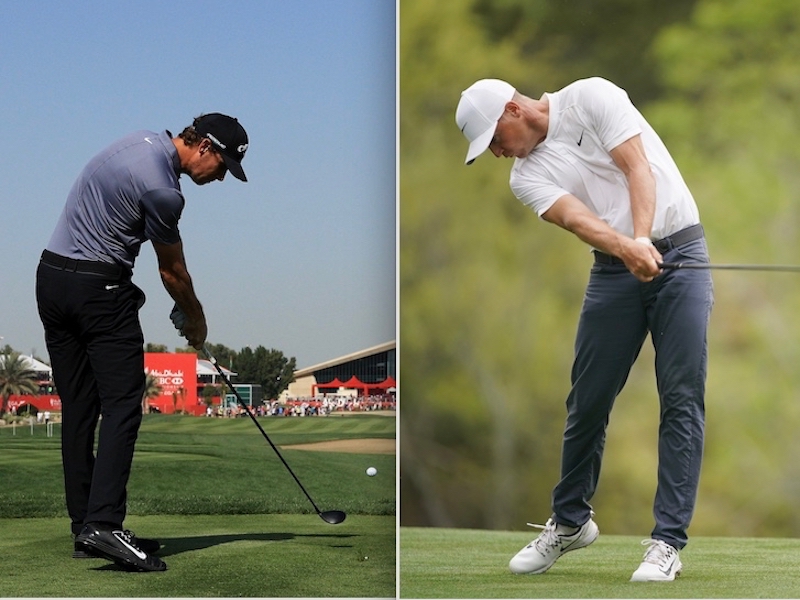7 great tips to improve your fairway wood and hybrid play
We highlight 7 ways to improve your fairway wood and hybrid play, from swing tips and strategy to club fitting and that vital gapping we hear so much about

We highlight 7 ways to improve your fairway wood and hybrid play, from swing tips and strategy to club fitting and that vital gapping we hear so much about
Tips to improve your fairway wood and hybrid play are interesting because they have to be all-encompassing. Off the tee, we might want our longest fairway wood to better meet our accuracy needs when the hole either doesn’t require driver, or we don’t fancy hitting it. A reliable go-to 3-wood is a must – just ask Henrik Stenson or Phil Mickelson who have made theirs particularly famous over the years. But off the fairway, the same club is often then called on primarily for distance as we attempt to coax it home from long range.
When it comes to hybrids their primary role is to facilitate higher-flying, quicker-stopping shots into greens from long range and to offer greater versatility away from the fairway compared to their long iron counterparts. Here, we look at seven great tips to improve your fairway wood and hybrid play…
Sweep or hit? Ball position is crucial, but different between the two types of club. For a fairway wood the ball should be just inside your left heel (for right handers - the opposite rules apply for left handers) to help you create the shallow angle of attack needed to sweep the ball off the the turf, or the tee, at the lowest point of your swing’s arc. Amateurs are often too steep into the ball, and this prevents them from finding their optimum flight. With hybrids, the ball should move back such that you are in position to make a similar swing to the one you would make with the longer irons they replace. They are, essentially, easier-to-hit long iron alternatives, so you do need to be hitting down on the ball just a little bit more than with your fairway woods.

Extension down the line After sweeping the ball away you need to feel as though you are almost chasing the ball down the line. If the elbows collapse or become bowed through impact, you will lose power and consistency and probably add loft so you won’t hit the ball as far. A good trick is to set the club in the extension position after impact with just your left hand on the club and your arm fully extended. Then bring the right hand into position without losing the extension in your left arm. This will give you a great idea of what good extension feels like after impact. The video below of 2017 Masters Champion Sergio Garcia shot in Dubai this year features mostly driver shots, but the same principles apply. Sergio Garcia is a master at releasing the angles in his wrists through impact and extending down the line - this a great visual to have in mind when trying to hit your metalwoods.
Watch: Sergio Garcia swing sequence
Stability Whenever you are making a powerful swing, you need lower body stability. A strong lower body will provide the foundation for a body rotation that will deliver easy yards. Power comes from the ground in the golf swing, with a stable base allowing a powerful turn, as long as you keep the right knee flexed. A good way to really feel stability is to take your stance and hold your club out horizontally in front on you like a weightlifter preparing to lift. Your core muscles should feel engaged at address and ready to go. Turn to the top maintaining the flex in your right knee and you will be able to feel what it is like to really draw on the power of the ground.
Get the Golf Monthly Newsletter
Subscribe to the Golf Monthly newsletter to stay up to date with all the latest tour news, equipment news, reviews, head-to-heads and buyer’s guides from our team of experienced experts.
Watch: GM Top 25 coach John Jacobs explains more about stability with your fairway woods
Strategy It is important to know how far every club in your bag goes but this is particularly true of your fairways and hybrids. Knowing that your fairway wood goes 220-yards will help you avoid well-placed bunkers off the tee or know whether you can carry hazards when approaching the green. With your hybrids you need to know how far they travel from different lies. Of course, this requires some homework on your part but some carefully structured practice will make you a much smarter competitor and help you avoid making those schoolboy errors that catch so many amateurs out.

Club fitting Many golfers who hit their drivers a touch left-to-right, for example, might want a 3-wood that they can move the other way more easily so they always have an option to progress it a long way down the hole whatever shape is required. When it comes to fitting, this may mean the shaft that works best for you in your driver may not be the best choice for your fairway woods and hybrids. Tour pros like Branden Grace work hard to keep their 3-wood feeling as comfortable as possible, because it’s such an important club. For him, that means going with a shaft that isn’t necessarily the best when it comes to the numbers, but gives him the flight and feel he wants. Numbers are important in club fitting, but confidence and comfort should always be factored in too.
Watch: Branden Grace talks more about his 3-wood in this 2018 What's in the Bag
Speed Swing speed is a key factor in how far, and how high you will be able to hit your fairway woods and hybrids. Even if you’re not the fastest swinger, there are still a ways to find out whether or not you’re optimising your swing speed potential. Swinging an alignment stick can tell you a lot. If you get a nice swishing sound through impact, you are probably releasing the club well. Release too early and you just won’t get the same sound, and if that’s what’s happening in your golf swing with your fairway woods, you’ll be costing yourself power and distance. Golf Monthly Top 25 coach John Jacobs explains this in more detail here. Modern fairway woods and hybrids are also designed to help you generate more ball speed off the face, especially on mishits.

Gapping Our final tip also relates back to fitting. Golf Monthly has videoed many club fittings over the years, and on many occasions, the players being fitted will happily admit that two of the clubs they are carrying at the long end of the bag go pretty much the same distance. With modern club design and the arrival of the hybrid in earnest 10 to 15 years ago, we now have more options than ever before, so there really is no excuse for not optimising the long end of your bag to its fullest potential.

The key is to bridge the gap between your longest iron and your driver as effectively as possible so you don’t leave yourself having to either hold back or force a club not really designed for the distance you face. Make sure the gapping between those two clubs is consistent so you can always make a solid, committed swing, and always seek the advice of a professional fitter.
Articles created in partnership with Callaway Golf.
-
 'Welcome To The Club' - Tiger Woods Leads Praise For Rory McIlroy After Masters And Grand Slam Glory
'Welcome To The Club' - Tiger Woods Leads Praise For Rory McIlroy After Masters And Grand Slam GloryA host of famous sports stars and celebrities have been quick to praise the Northern Irishman after his incredible victory at Augusta
By Michael Weston Published
-
 'He Wouldn't Talk To Me' - Bryson DeChambeau Reveals Rory McIlroy Dynamic During The Masters Final Round
'He Wouldn't Talk To Me' - Bryson DeChambeau Reveals Rory McIlroy Dynamic During The Masters Final RoundAfter a disappointing Sunday at The Masters, DeChambeau shared that McIlroy was so focused en route to victory that the pair barely exchanged words all day
By Jonny Leighfield Published